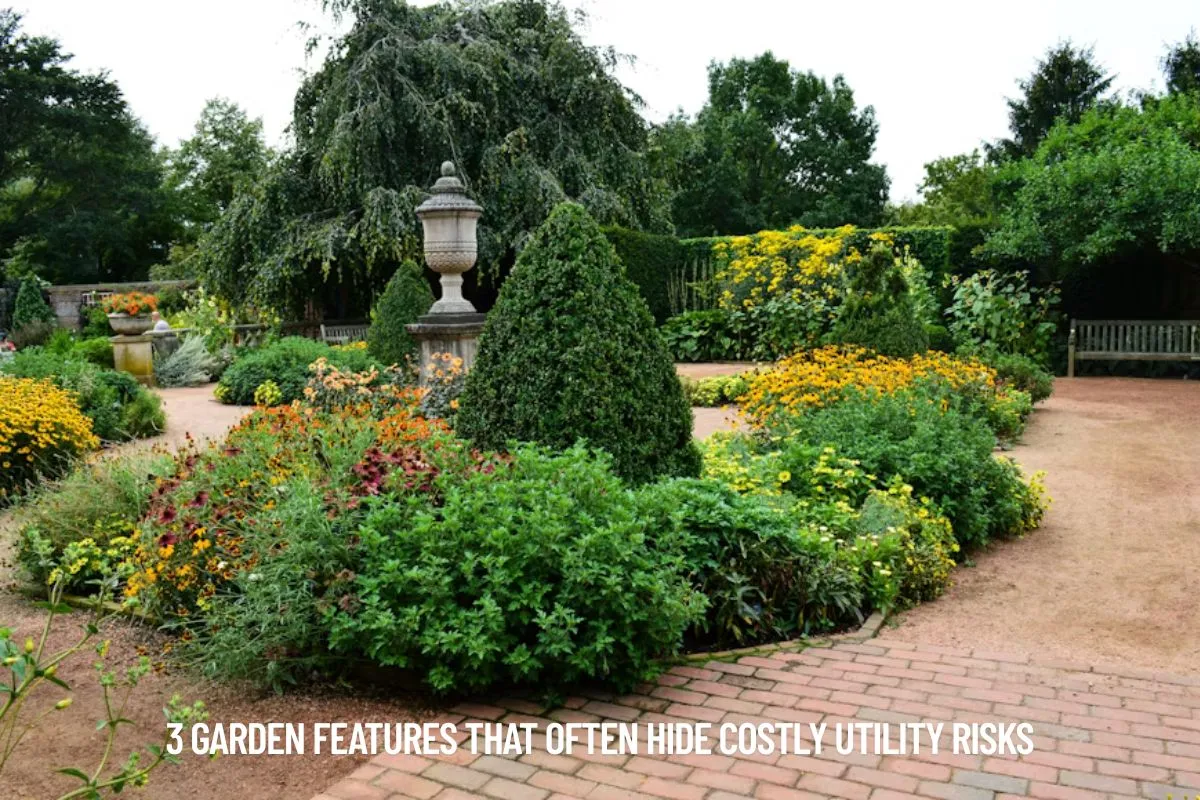The craze for beautiful home interiors and exteriors is showing no signs of decline. British homeowners in particular are spending lavishly on stylish patios and verdant pergolas.
This year, the UK lawn and garden market’s revenue amounts to $11.8 billion (£9.24 billion). A steady annual growth of 1.74% is expected till 2029. Amid the enthusiasm to improve their outdoor living spaces, many homeowners miss hidden risks.
This article will tackle three garden enhancements that often conceal utility issues. You will also find actionable tips to enjoy a beautiful and functional garden area that is also safe.
Deep Tree Roots and Dense Planting Beds
Does your home garden feature mature trees like oak or maple along with dense planting beds? There’s no doubt that they create a lush visual appeal, displaying an overflow of life. However, remember that such trees have expansive root systems.
The same goes for planting beds, which equal lots of roots. Any type of root naturally grows toward moisture and nutrients. This means the root system can invade older pipes, including the water mains, sewer lines, or drainage systems. It can lead to cracks and blockages over time, even costly repairs.
Root-related subsidence is a common problem in the UK. During dry spells, trees with expansive root systems tend to extract large volumes of water from the ground. Similarly, planting beds with thirsty shrubs and hedges can have a cumulative effect. This depletes soil moisture, thereby causing the ground beneath the property to shrink and shift: a process called subsidence.
As per the Association of British Insurers (ABI), an alarming £66 million in subsidence claims was paid out in the first half of 2024. Subsidence causes deeper issues than cracked walls and warped doors. It can also reduce property value significantly.
Example
Consider a tall tree like a poplar planted just a few meters from your property. As it matures, its roots stretch wide beneath the lawn, gradually pulling more moisture from the soil.
Over time, you notice a crack forming in the corner of a room. As months pass, the crack widens, and you schedule a professional assessment. All of this ends up in bank-breaking ground stabilization work.
What to Do:
- Ensure that large trees are planted 3 to 5 meters away from any utility lines.
- Opt for small, native trees and shrubs with less aggressive root systems.
- Install root barriers to direct growth downwards, not sideways.
- Get the drainage system assessed regularly to detect root ingress early on.
Paving Over Hidden Access Points
Homeowners get neat paving and fresh landscaping done to enhance the aesthetic value of their homes. The stylish slabs, beautiful pathways, and appealing patios may hide essential infrastructure.
For instance, inspection chambers, manhole covers, and service line valves are often found hidden beneath the new paving. In case of a blocked drain, a gas line check, or a maintenance issue, professionals need clear access. When such access points are unknowingly paved over or disguised for aesthetic reasons, repairs end up being far more disruptive and expensive.
In the UK, blocked drains are not just a minor inconvenience but a serious infrastructural concern. Take the examples of Worcestershire and Herefordshire, where this problem has tripled and quadrupled, respectively, over the past decade.
In 2024, the former reported over 5,000 drain-related issues, whereas the latter confirmed over 1,500 such cases. On top of all this, homeowners are often confused, questioning, “Who is responsible for manhole covers on my property?” It’s a valid doubt, stemming from being uninformed of one’s legal obligations.
Have you wondered the same? Proline Drainage notes that if the drain cover is located within your property boundary, serving only your home, it is your responsibility. Modifications like paving with restricted access make you all the more liable for maintaining, repairing, and ensuring accessibility to the manhole.
Example
A homeowner got a new patio laid using concrete slabs across the rear garden area. Unfortunately, a key manhole or inspection chamber to their private sewer line was accidentally paved over during the process.
Months later, a blockage occurred, but access was delayed as the cover had to be dug up and replaced. Since the manhole served only one property, the homeowner in question was held responsible. They had to carry out costly remedial work all by themselves.
What to Do:
- Check your utility plans before landscaping begins.
- Work with designers or builders who are familiar with the local building regulations and service layouts.
- Mark access points clearly to avoid accidental coverage.
- Opt for recessed access covers that are removable but blend in with paving materials.
Decorative Rock Gardens and Stone Mulch
Rock gardens and stone mulches are not only visually pleasing, but they’re also easy to clean and maintain. The problem with these only occurs when both are used excessively or without water management. They can end up disrupting the natural drainage balance of the garden.
For instance, too many heavy rocks can compact the soil underneath and reduce its permeability. Unlike plant-covered beds or absorbent topsoil, stone-heavy designs cannot soak rainwater. This can be especially problematic during periods of heavy rain, sending surface water in all directions.
Another overlooked risk is that of increased soil temperature. This may dry it out and cause nearby plants to struggle for moisture and nutrients. In the case of moisture-sensitive areas, the combination of heat and runoff may undermine surrounding structures like walls or patios.
It all begins with neat aesthetic choices, but can eventually interfere with your garden’s hydrology. In due time, the problem may escalate into water damage, flooding, and even foundational concerns.
A 2025 study found that UK homeowners are largely unaware of the risks that common garden changes pose. Just 33% of the respondents (from 2,000) believed that a lack of natural plants can increase the risk of floods. Moreover, only 28% saw artificial turf or grass as a problem. Awareness is the first step to nipping the issue in the bud.
Example
A homeowner replaces an old flower bed with a decorative rock garden. However, they fail to account for a proper soakaway. After a few storms, they notice puddles forming on the lawn. Moreover, moisture can be seen creeping into the garage wall.
This is the result of having no water absorption, something which plants and soil do. The homeowner incurs costly repairs in the form of waterproofing, landscaping corrections, and structural reinforcement.
What to Do:
- Ensure that rock gardens are graded away from the property’s foundation.
- Avoid placing stone mulch directly next to the walls or the foundation.
- Check for any signs of pooling water after rainstorms. If needed, adjust the layout.
- Schedule annual property inspections to detect early signs of ground movement.
Landscaping is an important part of enhancing your home’s curb appeal. However, it’s equally crucial to determine what lies underneath. To avoid hefty bills in the future, take a proactive approach towards hidden dangers.
If you’re planning to buy a new home with elaborate landscaping, request a utility map. Look for signs of water accumulation or subsidence. Prevention early on can spare your pockets and keep your property secure for years to come.










